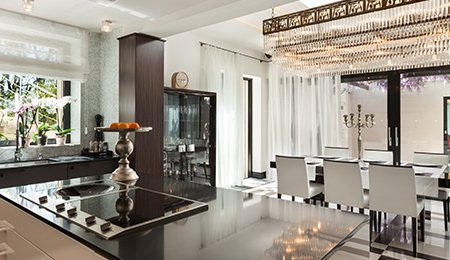Fixer-uppers cost less, but you need to consider your budget and timeline.
When I meet with buyers, some say, “I’m open to a fixer. I like to do the work.” This always makes me pause to clarify two things: first, their DIY skills and ability to handle work, and second, their timeline for completing the project. Learning about these helps me understand what type of fixer-upper home they’re looking for and whether it’s the best for them. While fixer-upper homes are priced lower than a move-in ready home, there are things you should consider before buying one.
Before you buy your starter home, you should first identify what type of fixer-upper you’re looking for.
1. Cosmetic fixers typically involve surface-level changes such as painting, changing wallpapers, and replacing flooring or countertops. Stores like Home Depot conduct seminars on how to hang wallpaper, strip paint, or redo tiles. These projects can often be completed on your own and can be a fun way to personalize your home while saving money.
2. Major fixers involve more work, which includes electrical, plumbing, bathroom updates, and kitchen remodels. These projects usually require general or licensed contractors and permits.
Although I’m not discouraging my clients from purchasing a fixer-upper, it’s important to be aware of the major downsides and challenges.
1. You need cash. You need to have enough budget to do your home projects right. Unlike a move-in-ready home, where the entire cost is typically financed through a mortgage, fixer-uppers often require additional funds for repairs. While there are loans specifically for fixer-upper homes, people who are doing these have the cash to do it themselves.
2. It takes time. Time commitment is another major factor to consider. Relying on contractors can lead to delays, as their schedules can be booked up for months. For example, if you want custom cabinets for your kitchen, it takes around four to five months before it can be completed. This means you may need to live in temporary accommodations while your home is under renovation, increasing your living expenses.
On the positive side, you can get the home of your dreams with a little bit of sweat equity. You can say, I’m going to buy a house whose kitchen I hate, and I’m going to make it exactly the way I want because now home is exactly who I want.
Just know that you’re also potentially competing with cash buyers. Since fixer-uppers need so much work, they won’t qualify for a loan, and therefore, you might be competing with builders and contractors who are into fix-and-flips. I’m not saying do it, but go in with your eyes open, and let’s talk strategy. Feel free to reach out to us at asksarita.com if you have any questions, or simply call me at (503) 522-0090. I’d be happy to help you.


